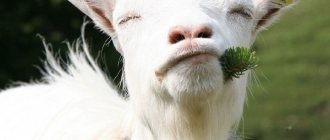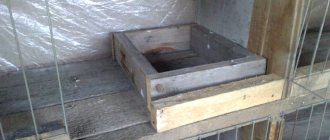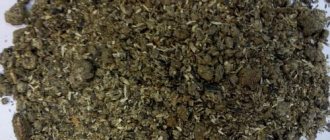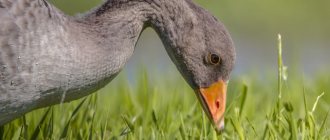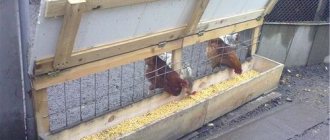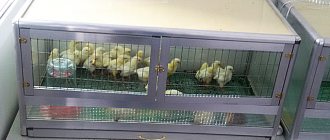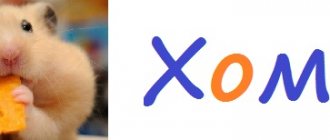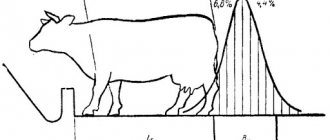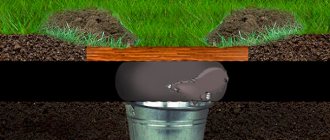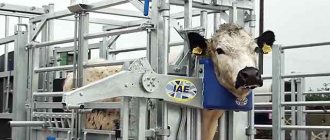Home » Articles about pigeons » Feeder for pigeons
The health of the livestock depends on the design of the pigeon feeder and the material used. There are plastic and metal feeders of hopper and tray types on sale. You can make them yourself using accessible and inexpensive materials.
Primary requirements
The container should be comfortable for the birds so that the birds do not interfere with each other. Feeding areas are usually demarcated by vertical partitions. If they are not provided, then there should be enough space for all birds - if necessary, you need to increase the number of feeders.
A prerequisite is the convenience of maintaining hygiene. To prevent debris and droppings from getting into the feed, birds not scattering it and spoiling the sediment, protection is provided (a “canopy” is built, horizontal jumpers are installed). Separate feeding areas are planned for chicks and adult pigeons in the dovecote.
The health of pigeons depends on their content
Bird feeders and waterers, and their effectiveness, are an important part of caring for any breed of pigeon. Before getting such animals, it is important to solve this problem, because the health of the birds depends on these containers. The comfort they need will make them healthy. The birds' eyes will sparkle, their breathing will be clearly audible, and their plumage will be noticeably shiny. Any poultry farmer will tell you that these are all signs of quality care.
Beginning poultry keepers may want to put off building pigeon feeders for a while. This is due to the fact that the chicks cannot eat food on their own for the first week. But as soon as they firmly stand on their paws, they urgently need to get down to business: making feeders and drinkers for pigeons. Before you take up the tools, you need to know about all the nuances associated with the design features.
Materials
Feeders are made from environmentally friendly materials - plastic, metal, wood.
Plastic
This material does not emit toxic substances, the edges are not sharp - the bird cannot get hurt. Plastic containers are hygienic and suitable for all types of feed. Thin-walled feeders are unreliable - pigeons can turn them over, so additional fastening or weighting is required (a weight is placed on the bottom).
Tree
The material is natural, strong, durable. It is well suited for dry food, but wet mash should not be used. The downside is the presence of sharp splinters (splinters) - the surface must be treated with sandpaper to remove all irregularities and smooth the edges.
Metal
Metal is the most reliable material. Metal containers are stable and suitable for all types of feed. Hygiene is easy to maintain - dirt can be easily removed, and if necessary, you can disinfect the surface using a burner. Disadvantage: sharp edges can injure pigeons; be sure to bend the metal edge.
What equipment and materials will be needed?
When making feeders at home, you are unlikely to need special expensive equipment. It is enough to have a primitive set of tools (saw, hammer, nails, etc.) and materials from which the structure is constructed. The most popular materials for beginner pigeon keepers are plastic, cardboard and wood. To choose one of them, you should consider the advantages and disadvantages of each:
- Cardboard is the cheapest and most short-lived material. Pros: there are no difficulties in manufacturing, a minimum supply of tools is required, simplicity of design. Disadvantages: lightness of construction (can be blown away by the wind), fragility (maximum a couple of months), does not withstand precipitation, can only be used in summer.
- Plastic is the most popular and widely available material.
Advantages: low cost, availability, minimum tools, resistance to any temperature and precipitation, durability, ease of maintenance. In addition, thanks to the transparency of the plastic, birds can see the presence of food from afar. Disadvantages: the need to make the structure heavier due to the lightness of the material. - Wood is the most reliable and durable material that will last for many years. You can create absolutely any structure from wood. Among the disadvantages, it is worth noting the relatively high cost (unlike plastic and cardboard) and the need to use additional tools.
Even a beginner can make a pigeon feeder. The main thing is to carefully study the instructions and strictly adhere to all recommendations.
Homemade wooden structure
The size of the pigeon feeder depends on the number of pigeons. To make it yourself you will need slats and plywood:
- 20x40 mm – 2 pcs.;
- 20x20 mm – 1 pc.;
- plywood - strip 13 cm wide.
The standard option for a large dovecote is 1.5 m.
2 parts in the shape of a “house” are cut out of plywood. The width of the base is 13 cm, the height to the bevel angle is 17 cm. From this point to the top, measure 5-6 cm. In the upper part, the corner of the “roof” is cut off - a platform 2-3 cm wide is formed (you don’t have to do this).
On the narrow side of strip No. 1, 20x40 mm, markings are made every 5 cm. On strip No. 2, 7.5 cm are retreated from the edge, and then markings are made every 5 cm.
The markings from rail No. 1 are transferred to one side of the narrow 20x20 mm strip and the corresponding mark is made (No. 1) so that you can navigate when assembling the structure. The markings are transferred to the other side from rail No. 2. Holes (not through holes) are made along the marks.
At the next stage, 20x40 mm strips are screwed to the bottom from one and the other edge. Parts in the shape of a “house” are screwed onto the end sides. On each of these parts, 17 cm from the bottom edge in the center, marks are made for a screw. In a 20x20 rail, the center is marked in the end parts. It is screwed in accordance with the marks (No. 1 and No. 2) - the holes at the top and bottom will be at the same level.
Prepare pieces of hardened wire 14 cm long. One end of each piece is inserted into the upper bar, the other into the lower one. The top can be covered with a “roof” by cutting out 2 parts from plywood.
How to make a drinking bowl?
Feeding pigeons involves providing them with water, so it is necessary to make a drinking bowl. There are different ways to do this.
Automatic heated drinker
It is used during frosts so that the liquid does not freeze and the birds can always drink. The drinking bowl consists of the following elements: stand; a heating device, a drinking container, a bottle with a dosing tube that is filled with liquid. How to do:
- The container is a round container made of plastic material, in which you need to make a hole on the side through which the pigeons will drink. It should be at a distance of 6-10 cm from the bottom.
- A tin can filled with paraffin is suitable for the burner. A wick must be installed (you can use asbestos rope). Instead of fuel, an ignition agent is used.
- The stand should also be made of tin. A burner is installed on it and ignited. The top is covered with a protective case made of tin, in which several holes must be made (gas exchange is created).
- A plastic drinking bowl with a small weight is installed on top, so it does not tip over. In the upper part of the container, you need to make a round hole the diameter of a 1.5 liter plastic bottle. It is this that is filled with water and inserted into the drinking bowl upside down. A dosing tube is installed inside to prevent liquid from overfilling the drinker. Thus, as the container is emptied, the drinking bowl gradually fills with water.
An example of making another automatic drinker is shown in the video below:
Vacuum drinking bowl
How to make it yourself:
- Use a bowl and glass jar. The diameter of the bowl should be larger than the neck of the jar.
- At the bottom of the bowl, glue four rubber cubes that describe the circumference of the neck of the jar.
- Pour water into a jar, cover it with a bowl and turn the jar upside down. This will allow water to fill the bowl and will flow again as it is emptied.
Homemade feeders are almost as good as factory ones, and making them at home significantly saves money. The main thing is to carefully study all the intricacies of manufacturing structures, adhere to the basic rules and choose the most suitable option among the many models.
0
0
Copy link
Bunker structures
The bunker capacity makes it possible not to worry about constant replenishment of feed supplies. It is enough to pour it into the bunker once - as the grain mixture in the lower container decreases, a new portion will arrive there. The photo below shows a classic bunker feeder.
From plastic bottles
For production you will need a plastic bottle with a capacity of 5-6 liters. The bottom is cut off in such a way that the 2nd part inserted into it with the neck down does not reach the bottom by about 5 cm. The bottom serves as a feeder. At a height of 4 cm, holes are cut for access to the feed. The top is used as a bunker into which the feed will be poured.
You can use a stand for reliability - vertical jumpers are fixed on a stable horizontal base, to which the “hoppers” will be attached (the pitch between the jumpers is equal to the diameter of the container). The bottom of the bottle is placed on a flat base. The upper part of the container is fixed on the vertical jumpers so that the neck is located no higher than the edge of the lower one.
From plastic pipes
You can make a horizontal feeder for pigeons with your own hands from a plastic pipe with a diameter of 110 mm.
You will need 2 pieces of 1 meter each. A long hole is cut on one part from one edge to the other or a series of holes are made side by side. One side of each pipe section is closed with plugs. The free edges are inserted into the knee. The structure is placed near the wall and fixed. The side with the holes is positioned horizontally. The second side plays the role of a bunker - it is mounted vertically.
Requirements for pigeon feeders
Feeders must comply with veterinary and sanitary standards. Then it will be easier to feed the birds and care for them. Properly made feeders will make it more comfortable for pigeons to eat. Easy-to-maintain products stay clean longer, so the risk of infection is lower.
Important! Separate feeders should be made for pigeons of different ages. After all, the chicks are afraid to approach the common “dining room”.
When creating feeding containers, it is worth considering the following requirements:
- the bird must have access to feed around the clock;
- the structure must be protected from debris, droppings and precipitation;
- the product must be easy to maintain (cleaning, disinfection and changing feed);
- the paws and body of pigeons should not come into contact with food;
- the food should not fall out of the container;
- The structure is made from environmentally friendly material.
Properly selected materials for the feeder will increase its service life.
Even simple models can meet the above requirements.
There are 2 types of containers:
- automatic;
- box.
The former protect food from contamination, poultry from overeating, scattering of food and do not require human intervention. The latter are easier to build, and in terms of other functions, many models are not inferior to automatic designs.
Feeding pigeons
Baby pigeons should be fed separately from adults, since they will not get enough to eat when fed together. To make the structure you will need:
- plastic tray from a flower pot;
- metal grid;
- glass jar.
The length of the mesh section is 2 cm greater than the diameter of the neck of the glass container. Width – 5 cm. A ring is rolled up from the mesh so that it freely covers the neck (margin – 2-3 mm). Connect the edges with wire. On one side, a row of horizontal rods is cut off with pliers, leaving only the vertical ones. They are heated over a fire and pressed into a plastic tray, pierced through. The pins are bent on the back side, fixing the ring. Food is poured into the jar. A ring attached to a pallet is put on top. The structure is turned over.
What to feed pigeons?
If you have not previously raised pigeons or provided them with feeders, you are probably interested in what you can give to pigeons as food. The basis of the diet for pigeons is grain and grass. Grain can be given differently depending on the time of year and other factors.
We list the main types of grains that can be given to pigeons:
- barley (special attention is paid to it during molting);
- pearl barley;
- wheat (its quantity increases during molting and feeding of chicks);
- millet (gives a lot of energy, young animals and sports breeds especially need it);
- shelled oats or oatmeal.
Legumes are also included in the diet of pigeons, but be careful because they lead to weight gain. They are usually added to food at the beginning of molting, during transportation or during breeding and feeding of chicks.
During the season, do not forget about the grass; you can grow it on your own plot, if you have one, or simply pick it from any clean and accessible lawn.
Pigeons also need vitamins and minerals, which can be replenished by adding finely chopped greens (nettle, sorrel, alfalfa or cabbage) and ground shells, eggshells or charcoal to the menu.
If you want to simplify the task, then instead of the above sources of vitamins and minerals, you can purchase special vitamin and mineral complexes at the pet store. Most of them are water-soluble pills that are easy to use.
By following our instructions, it will not be difficult to make any of the feeders yourself and please your birds with a new device to satisfy their appetite.
DIY drinking bowl
Pigeon breeders are familiar with the situation when a small chick is not yet able to take food on its own, but at the same time it is in dire need of water. The fact is that when leaving the nest, about 80% of small individuals experience great stress, which is associated with a temporary refusal to eat.
In this situation, it is necessary to make a special design that would be combined with a drinking bowl, and from which it would be easier for small chicks to take food.
Making a drinking bowl for pigeons
Such a device should be located in the center of the nesting area so that the small birds gradually get used to the new feeding regime.
To make three drinkers, you will need plastic bottles with a capacity of 3 or 5 liters, depending on the size of the farm.
Also, to create a wooden base that will hold the bottles, you need to take:
- wooden board measuring 30*60 cm;
- 4 wooden blocks.
We nail the beams to a wooden board at the same distance so that a plastic bottle fits between them. Keep in mind that it should fit freely without deforming, but at the same time touch the walls.
Cutting off part of the plastic
We cut off the bottom of all three bottles and wrap the cut with tape so as not to injure your hands during operation.
We make bowls from the bottom, which will serve as a container where water flows, and from where the birds will have free access to moisture. To avoid injuring the birds, it is recommended to wrap the sharp edges of the plastic with tape.
Using a drill with a thin drill bit, make small holes in the lids so that the water slowly drains into the container.
Use a drill to make a hole
To protect against debris and snow, build a fence over the drinking bowls so that the pigeons always have clean water.
During hot weather, for disinfection, experienced pigeon keepers recommend adding a weak solution of potassium permanganate to the water.
When setting up a pigeon farm and creating a drinking bowl, it is very important to take into account the characteristics and habits of birds. For example, when a pigeon drinks water, it immerses its head almost right up to its eyes. Therefore, the water level must be deep enough. But not too much so that the birds don’t muddy the water.
For the winter period, it is better to make a drinking bowl for birds that can be heated, since they will not be able to get water.
Step-by-step instructions for making your own feeders
Wooden feeders
To create a structure made of wood, you will need the following (the parameters are given as an example):
- plywood;
- boards - 4 pieces (two of them are 70x8 cm in size, the remaining ones are 25x20 cm);
- tin;
- wooden block 70 cm long;
- nails;
- slats.
The process of making a feeder in the form of a house:
- Put together a box from boards using fastening nails. The back and side walls should be high. Be sure to nail the cover from the board.
- Make a roof from 2 pieces of plywood, which should protrude above the structure.
- Separately make a pallet (movable) from plywood and slats. It is installed on the bottom of the feeder.
- Attach a weather vane to the roof to scare away birds (so that they don’t land on top).
- Nail a piece of wood so that between it and the bottom there is space for inserting a pull-out tray.
- Tin is needed to create restrictive strips (cut into strips). They are mounted in front of the feeder in a vertical position. They are fixed between the lid and the bar.
Other options for wooden feeders are presented schematically below:
Cardboard feeder
Cardboard products can be made for temporary use (until you can make or purchase a more durable design). For this, you can use cardboard boxes of any size, but it is best to take a device for shoes (compacted cardboard, optimal size). Additionally, you need scissors and tape.
- make holes for the rope in the corners of the lid and bottom;
- thread;
- hang it from a support.
These feeders can be used to feed wild birds in parks and yards.
From a cardboard box:
- give the box the appearance of a house;
- secure with tape;
- make holes for entry.
Such feeders can be hung on the balcony (when keeping pigeons at home) or placed on the floor in the dovecote (in this case, small pebbles must be placed at the bottom of the paper structure, which will serve as weighting devices so that the wind does not rock the structure).
Plastic feeder
For this purpose, 5- or 6-liter plastic bottles are used. They can be installed both vertically and horizontally, after cutting out holes for the birds.
How to make a feeder from a plastic bucket and a plastic bottle, see the video below:
Hopper automatic feeder
This method allows you to control the amount of feed supplied. You can immediately pour a significant amount of grain into such a feeder, which will flow into the feeding compartment as it is emptied. This is convenient if the owner of the dovecote leaves for several days (the pigeons will not go hungry). Feed is supplied automatically.
Cardboard pigeon feeder
For beginner amateurs who are just mastering this hobby, the easiest option would be to make a small dining room for birds out of cardboard. Of course, this model will not withstand heavy rainfall, but it is suitable for the summer period.
Cardboard feeder
This simple option can be easily made from a shoe box. The main thing is to be patient and resourceful in order to decorate your area and create a convenient feeding area.
To complete the work you will need:
- cardboard box of suitable size;
- scotch;
- scissors.
The tape will help protect your bird food from moisture.
It is necessary to cut a large hole in one part of the box, which will provide free access for birds inside the structure. To prevent the bottom from getting damp, the container can be hung from a tree or house. To do this, cut holes in the side and thread the cord.
Consider the light weight of the structure and the fact that it can sway during strong gusts of wind. To do this, it is necessary to pour large stones at the bottom, which will not create unnecessary debris, but will at the same time ensure a stable position.
